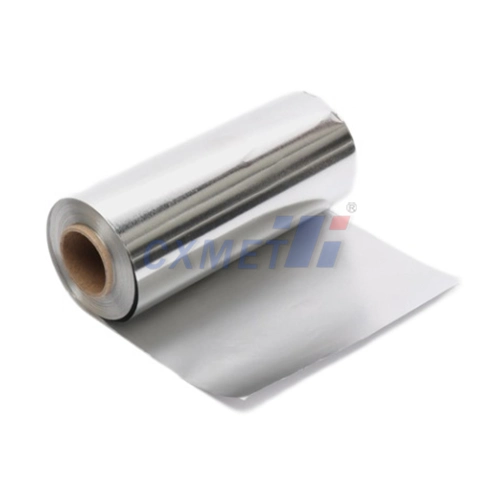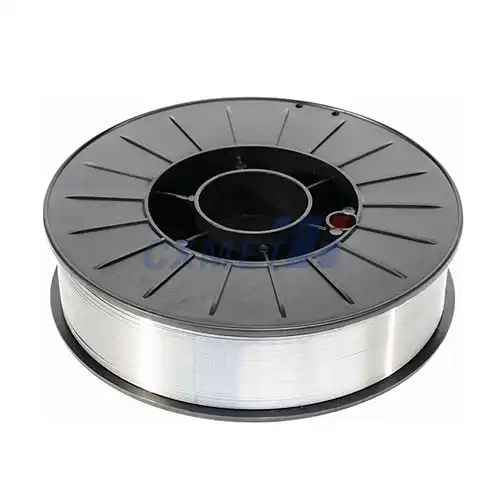- English
- French
- German
- Portuguese
- Spanish
- Russian
- Japanese
- Korean
- Arabic
- Greek
- German
- Turkish
- Italian
- Danish
- Romanian
- Indonesian
- Czech
- Afrikaans
- Swedish
- Polish
- Basque
- Catalan
- Esperanto
- Hindi
- Lao
- Albanian
- Amharic
- Armenian
- Azerbaijani
- Belarusian
- Bengali
- Bosnian
- Bulgarian
- Cebuano
- Chichewa
- Corsican
- Croatian
- Dutch
- Estonian
- Filipino
- Finnish
- Frisian
- Galician
- Georgian
- Gujarati
- Haitian
- Hausa
- Hawaiian
- Hebrew
- Hmong
- Hungarian
- Icelandic
- Igbo
- Javanese
- Kannada
- Kazakh
- Khmer
- Kurdish
- Kyrgyz
- Latin
- Latvian
- Lithuanian
- Luxembou..
- Macedonian
- Malagasy
- Malay
- Malayalam
- Maltese
- Maori
- Marathi
- Mongolian
- Burmese
- Nepali
- Norwegian
- Pashto
- Persian
- Punjabi
- Serbian
- Sesotho
- Sinhala
- Slovak
- Slovenian
- Somali
- Samoan
- Scots Gaelic
- Shona
- Sindhi
- Sundanese
- Swahili
- Tajik
- Tamil
- Telugu
- Thai
- Ukrainian
- Urdu
- Uzbek
- Vietnamese
- Welsh
- Xhosa
- Yiddish
- Yoruba
- Zulu
What is GR3 Titanium Seamless Tube?
GR3 titanium seamless tube is a high-performance material widely used in various industries due to its exceptional properties. This grade of titanium alloy, also known as Grade 3 titanium, offers a unique combination of strength, corrosion resistance, and biocompatibility. GR3 titanium seamless tubes are manufactured without any welding seams, ensuring uniform properties throughout the material and enhancing its reliability in critical applications.
What are the key properties of GR3 titanium seamless tubes?
GR3 titanium seamless tubes possess a range of remarkable properties that make them highly sought after in numerous applications. First and foremost, these tubes exhibit excellent corrosion resistance, particularly in oxidizing environments such as seawater and marine atmospheres. This characteristic makes them ideal for use in offshore oil and gas industries, desalination plants, and marine equipment.
The mechanical properties of GR3 titanium seamless tubes are also noteworthy. They offer a good balance of strength and ductility, with a minimum tensile strength of 450 MPa and a yield strength of 380 MPa. This combination allows for the design of lightweight yet durable components, which is crucial in aerospace and automotive industries where weight reduction is a constant goal.
Another key property of GR3 titanium seamless tubes is their exceptional biocompatibility. Titanium is known for its ability to integrate well with human tissue and bone, making it a preferred material in medical implants and prosthetics. The seamless nature of these tubes further enhances their suitability for medical applications by minimizing the risk of contamination or material failure.
GR3 titanium seamless tubes also demonstrate excellent heat transfer properties and thermal stability. They maintain their strength and structural integrity at elevated temperatures, making them suitable for heat exchanger applications in chemical processing plants and power generation facilities.
Furthermore, these tubes exhibit low thermal expansion and high fatigue strength, which are crucial factors in applications involving cyclic loading or temperature fluctuations. This property set makes GR3 titanium seamless tubes an excellent choice for aerospace components, such as hydraulic and pneumatic systems in aircraft.
How are GR3 titanium seamless tubes manufactured?
The manufacturing process of GR3 titanium seamless tubes is a complex and carefully controlled procedure that ensures the highest quality and consistency of the final product. The process typically begins with the preparation of titanium sponge, which is then melted and alloyed with other elements to achieve the desired Grade 3 composition.
The alloyed titanium is then formed into a cylindrical billet, which serves as the starting point for tube production. The seamless tube manufacturing process can follow one of two main methods: extrusion or piercing.
In the extrusion method, the titanium billet is heated to a high temperature and then forced through a die with a mandrel in the center. This process creates a hollow tube with a consistent wall thickness. The extruded tube is then further processed through a series of cold working steps, including drawing and pilgering, to achieve the final dimensions and mechanical properties.
The piercing method, also known as the Mannesmann process, involves rotating the heated titanium billet and passing it through angled rolls. This action creates a central tension in the billet, allowing a piercing plug to create the hollow center of the tube. The resulting shell is then processed further to achieve the desired dimensions and properties.
After the initial forming process, GR3 titanium seamless tubes undergo several additional stages of processing. These may include cold working to improve strength and reduce the tube diameter, heat treatment to optimize mechanical properties, and surface treatments to enhance corrosion resistance or prepare the tubes for specific applications.
Quality control is a critical aspect of GR3 titanium seamless tube manufacturing. Throughout the production process, rigorous testing and inspection procedures are implemented to ensure that the tubes meet the required specifications. These tests may include dimensional checks, non-destructive testing methods such as ultrasonic or eddy current inspection, mechanical property testing, and chemical composition analysis.
The manufacturing process for GR3 titanium seamless tubes requires significant expertise and specialized equipment. The high melting point of titanium and its reactivity at elevated temperatures present unique challenges in processing. Therefore, manufacturers must maintain strict control over the production environment to prevent contamination and ensure the integrity of the final product.
What are the main applications of GR3 titanium seamless tubes?
GR3 titanium seamless tubes find applications across a wide range of industries due to their unique combination of properties. One of the primary sectors utilizing these tubes is the aerospace industry. In aircraft manufacturing, GR3 titanium seamless tubes are used in hydraulic and pneumatic systems, fuel lines, and structural components. Their high strength-to-weight ratio contributes to fuel efficiency and overall performance of aircraft.
The marine industry is another significant user of GR3 titanium seamless tubes. Their exceptional corrosion resistance in seawater makes them ideal for applications such as heat exchangers in desalination plants, offshore oil and gas platforms, and submarine components. The tubes' ability to withstand harsh marine environments without degradation ensures long-term reliability and reduced maintenance costs.
In the chemical processing industry, GR3 titanium seamless tubes are employed in various equipment such as heat exchangers, reactors, and piping systems. Their resistance to a wide range of chemicals, combined with excellent heat transfer properties, makes them suitable for handling corrosive substances and high-temperature processes.
The medical field is another area where GR3 titanium seamless tubes play a crucial role. Their biocompatibility and corrosion resistance make them an excellent choice for surgical implants, prosthetics, and medical devices. The seamless nature of these tubes minimizes the risk of contamination and ensures consistent performance in critical medical applications.
Power generation is yet another sector that benefits from the use of GR3 titanium seamless tubes. In both conventional and nuclear power plants, these tubes are used in condensers, heat exchangers, and other components exposed to high temperatures and corrosive environments. Their durability and resistance to thermal fatigue contribute to the long-term efficiency and safety of power generation facilities.
The automotive industry also utilizes GR3 titanium seamless tubes, particularly in high-performance and racing applications. These tubes are used in exhaust systems, suspension components, and other areas where weight reduction and high strength are crucial.
In the oil and gas industry, GR3 titanium seamless tubes are employed in downhole tools, offshore platforms, and subsea equipment. Their ability to withstand corrosive environments and high pressures makes them valuable in these demanding applications.
Lastly, the sports and leisure industry has found innovative uses for GR3 titanium seamless tubes. They are used in the manufacturing of high-end bicycle frames, golf club shafts, and other sporting equipment where lightweight strength is paramount.
The versatility and exceptional properties of GR3 titanium seamless tubes continue to drive their adoption in new and emerging applications across various industries. As technology advances and new challenges arise, these tubes are likely to play an increasingly important role in engineering solutions for the future.
At SHAANXI CXMET TECHNOLOGY CO., LTD, we take pride in our extensive product range, which caters to diverse customer needs. Our company is equipped with outstanding production and processing capabilities, ensuring the high quality and precision of our products. We are committed to innovation and continuously strive to develop new products, keeping us at the forefront of our industry. With leading technological development capabilities, we are able to adapt and evolve in a rapidly changing market. Furthermore, we offer customized solutions to meet the specific requirements of our clients. If you are interested in our products or wish to learn more about the intricate details of our offerings, please do not hesitate to contact us at sales@cxmet.com. Our team is always ready to assist you.
References:
1. ASTM International. (2021). ASTM B338 - Standard Specification for Seamless and Welded Titanium and Titanium Alloy Tubes for Condensers and Heat Exchangers.
2. Lutjering, G., & Williams, J. C. (2007). Titanium (2nd ed.). Springer-Verlag Berlin Heidelberg.
3. Froes, F. H. (Ed.). (2015). Titanium: Physical Metallurgy, Processing, and Applications. ASM International.
4. Boyer, R., Welsch, G., & Collings, E. W. (Eds.). (1994). Materials Properties Handbook: Titanium Alloys. ASM International.
5. Peters, M., Kumpfert, J., Ward, C. H., & Leyens, C. (2003). Titanium alloys for aerospace applications. Advanced Engineering Materials, 5(6), 419-427.
6. Rack, H. J., & Qazi, J. I. (2006). Titanium alloys for biomedical applications. Materials Science and Engineering: C, 26(8), 1269-1277.
7. Donachie, M. J. (2000). Titanium: A Technical Guide (2nd ed.). ASM International.
8. Schutz, R. W., & Watkins, H. B. (1998). Recent developments in titanium alloy application in the energy industry. Materials Science and Engineering: A, 243(1-2), 305-315.
9. Faller, K., & Froes, F. H. (2001). The use of titanium in family automobiles: Current trends. JOM, 53(4), 27-28.
10. Veiga, C., Davim, J. P., & Loureiro, A. J. R. (2012). Properties and applications of titanium alloys: A brief review. Reviews on Advanced Materials Science, 32(2), 133-148.




